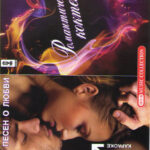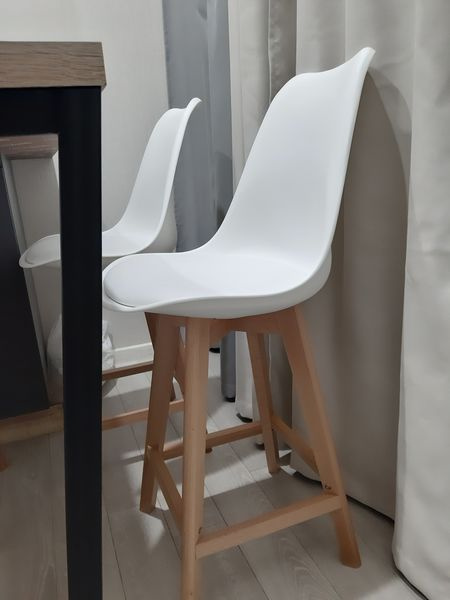Maria Stroganova from the editorial office of the Pravmir website interviewed Archpriest Pavel Velikanov, rector of the Pyatnitsky farmstead of the Trinity-Sergius Lavra in Ser …
Without Kevordo

Why is the Orthodox calligraphy? For work? For study? For prayer? From nerves and for health? All these questions can be answered in the affirmative. In the miraculous properties of calligraphy classes, Maria Stroganova from the editorial office of the Pravmir website was convinced at the courses at the Pyatnitsky courtyard of the Trinity-Sergius Lavra in Sergiev Posad. The inspirer and creator of the courses is Archpriest Pavel Velikanov, Rector of Pyatnitsky Compound, teacher-Viktor Novikov, graphic artist, member of the Union of Artists, icon writings.
Today is not an academic day, and still in the class of calligraphy in the basement of the Vvedensky church, parishioners are looking – calligraphy requires constancy. The teacher Viktor Novikov lays out the educational material and says that everyone can master the skills of the right and beautiful letter. For the first steps in calligraphy, you do not need to have a beautiful handwriting or artistic talent – perseverance and practice are important.
– As a child, I had a rather bad handwriting, but I loved to imitate the handwriting of others. I look at my school notebooks – one page is written in one handwriting, the second – the other.
– Was there any problems with parents about the disease from parents?
– That's it. By the way, calligraphy is not only beautiful, but also useful. Some doctors believe that there are no diseases that are not cured by calligraphy. I myself did not put experiments, but they say that so. When we write, we take the feather with three fingers, and it turns out that certain zones of the brain are involved. I read that only the violin can be replaced by calligraphy. But in order to be a violinist, you need a rumor and a skill, and here you just write beams – and please: the brain works almost one hundred percent.
– And the writingsa Doesn't this apply a simple pen?
– Not. When we write a ballpoint pen – this is a continuous letter: we put a pen how we were taught at school, and write, without interrupting. In calligraphy, we think about each letter, on every movement. This, of course, is slower, but there is much more benefit.
The ballpoint pen ruined both people and culture. Here the Chinese and the Japanese did not abandon their hieroglyphs, which are written by a brush. We have an incomplete replacement of Peru – a feathers. But when you write with a pen, you just have to write correctly, turning the sheet, hand or surface itself as it should be for the letter.
– What else could be the benefits of calligraphy?
– Of course, we write not only for the sake of pleasure or for the beauty of the letter. It is important that we think about what exactly we write. For example, when in the classroom we rewrite the Holy Scripture, imagine how many times a person scroll through every phrase in his head, how much the text will be deposited in his memory? And now I often ran my eyes on the Internet – and that’s it.
It used to be a normal practice for monks to rewrite the Holy Scriptures. Both John of the Ladder and Fyodor Studit said: let there be calligraphy in the monasteries. Firstly, to distribute the book, and secondly, to study the Holy Scriptures and pray. As they said at school: if I would rewrite a physics textbook once, I would know physics.
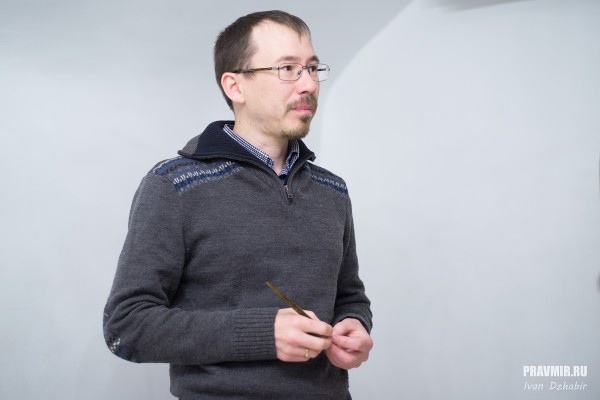
If parents bring their child to calligraphy classes in order to improve his handwriting, a miracle will not happen. But writing with a pen can cultivate perseverance. For children, Victor has special poster feathers, and instead of letters, different animals. They, like letters, must be written in a few movements with a pen, and not drawn:
– If a child wants to draw such a beautiful bird, – Victor shows, – he will torment it with a pencil for a long time, and just like that – it happened. It is very interesting for children, and at the same time they learn to write cleanly. I had one very frisky child in the classroom, he spilled mascara three times during the lesson – it was unpleasant himself, so in the future he became more careful, more attentive. Previously, children at least wrote with fountain pens, tried, but now there is no blot – write as you like.
— Are copybooks in school not aimed at the same thing as calligraphy?
– If the copybooks were written with a thin pen, a calligraphy lesson was introduced, it would be useful. And now it’s not clear that they don’t work on the font, they don’t work on the handwriting. After all, calligraphy appeared as beautiful writing. And the more beautiful, the better, because the more beautiful the letter, the more intelligible it is, the more pleasing to the eye.
First of all, when talking about calligraphy, it is important to understand that we do not draw, but write letters. Calligraphy is handwritten. With the advent of printing, calligraphy as an art form was forgotten, printed books appeared, and writing practically ceased. Only at the beginning of the 20th century did calligraphy begin to revive. And it is interesting that when they began to look at ancient books, it seemed to people that all the letters in them were drawn, it didn’t even occur to them that each letter was written in two or three movements. Then Edward Johnston, an English calligrapher, took a wide-nib pen and wrote the same letters. It is with his name that the revival of modern calligraphy is connected.
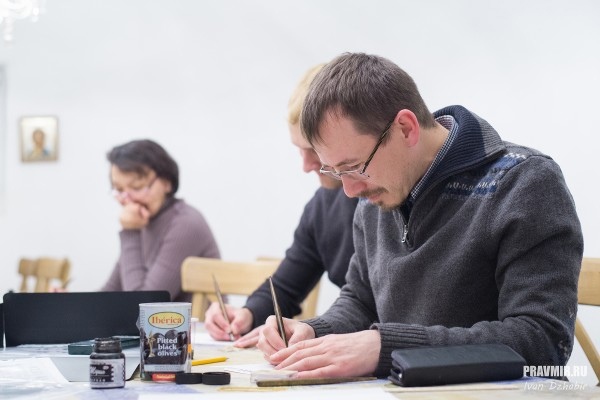
Victor distributes paper, pens, puts jars of ink on the table. For a calligraphy lesson you need to have:
• black ink in a jar;
• paper napkins (because the hands from the carcass will definitely be black).
We draw the paper, mark lines of one and a half centimeters along the ruler – about this height, the letters will then fit into the line. Then fill the pen with ink. In the classroom, everyone writes with steel nibs – they are more rigid, and in their properties are more like a tree. These feathers have special ink holders so that the ink does not flow out all at once – it is easier to draw a line this way.
It is important not to overdo it and not to dip the pen into the ink completely. The ink fills the groove-recess from above and the entire upper side of the pen to the tip.At first, I’m the whole pen of the pen, and soon blots appeared on my sheet of paper – hello from childhood. By the way, the art of a good calligrator also consists in turning any mistake into dignity – for example, make a particularly beautiful letter out of a blot.
“The letters that come out of the penigraph pen are alive,” says Victor. – If the calligrapher writes the text and suddenly makes a mistake, he must be able to correctly fix everything. The man is not a printing machine. And this is life, this is beauty.
If you look closely, in ancient texts all letters are different. And even when the printing press was invented, there were several options for the same letter to avoid the same. For people then it was generally strange that the letters could be the same, it was perceived as modernism. And therefore, if you bring the handwritten font to the mechanism and automatism, this is bad. There should be life in it.

— Does the excess automatism not appear from practice?
– There are people who tend to write too carefully. On the contrary, they need to do such exercises that, so to speak, will free them from automatism.
– You can see and say: this was a person, and this is a car?
– Yes, and you say. Nevertheless, calligraphy in calligraphy is practically the law. If the artist is mistaken, the drawing can always be corrected, and the calligrapher practically does not correct the text. If we consider ancient leather books, in some places you can see how errors were cleaned.
Before starting, the pen needs to be painted. To do this, it is placed on paper and slightly rotated-right and right, again to the right. You can paint the pen on the draft and on the cleanliness. But in the latter case, this dash must be put exactly where the letter or stroke will be.
We begin to write. It is important not to be afraid to press the pen and lead the line with the whole hand, and not just with fingers. In this case, the elbow must be torn from the surface of the table. And then the first thick line is drawn, and not even a curve – miracles. In general, the first lesson of calligraphy is still similar to the first grader's prescription: dashes, circles, sticks. The exercises are the same – parts of the letters. Then letters are compiled from these parts. But we, of course, are impatient – we immediately try to write letters and words. It turns out very mediocre. The art of calligraphy seems to be much harder to comprehend than it seemed at first.
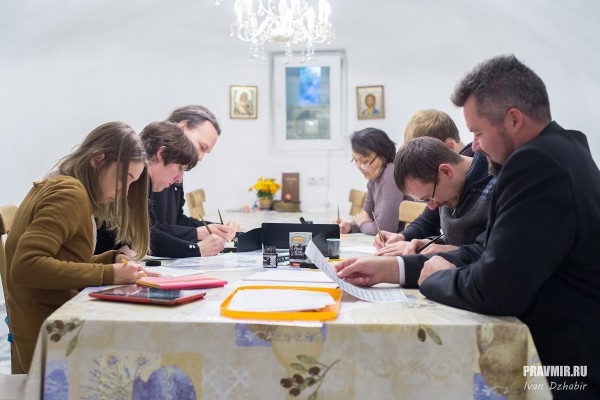
— Who is your main audience who needs calligraphy classes today?
– Different people are engaged in: parishioners, guys from the seminary, icon painters, since signatures on icons are made on the basis of calligraphy.
— What fonts do you study?
-Our classes began in July, and we have already managed to more or less study the so-called basic font that Edward Johnston invented. He developed this font based on medieval English fonts. Now we began to engage in the charter, we write ancient Slavic fonts. The Gospel was taken as a basis.I myself developed a font as close to the ancient sample as possible.
Then we will rest from the Slavic letters and try to write something European, for example, Gothic, rustic or unicalel. At least, I like these fonts, and I would like people to work on them too.
And our main task is to write the gospel. We select people among the participants in our classes, who are able to write a lot and well, and create a handwritten gospel.
I ask Victor to write some famous phrases to shoot the process on the camera. If you keep a feather at an angle of 30 degrees – it will be a basic font, under 45 it is already Gothic. It is quite difficult to rebuild – if you write with a base font, it is better not to cross the other. That is why Victor reacts with a smile to my requests to write Coca-Cola or draw a curl-to change the font and style is not good:
– To switch to another font, you need time. In the charter, the pen all the time turns at an angle, such a feature. Another feature – I am now writing in a certain size, because the thickness of the pen estimates the size of the letter from one to four millimeters. If, for example, take the pen larger – letters, respectively, will be more. And this size I can write only what I write, otherwise I will leave the image, it will be different.
Thin Church Slavonic letters create a certain image. Now in the Russian font it has already been lost, our font has become more European, unfortunately. If it developed precisely as Church Slavonic, we might have now had a completely different impression of the Russian language. And now we have everything a little like that … And not our own, and not alien.
Another big problem is even for modern fonts – translation. When we look at the Latin font – yes, beautiful, and the option of the same font in Russian does not look.
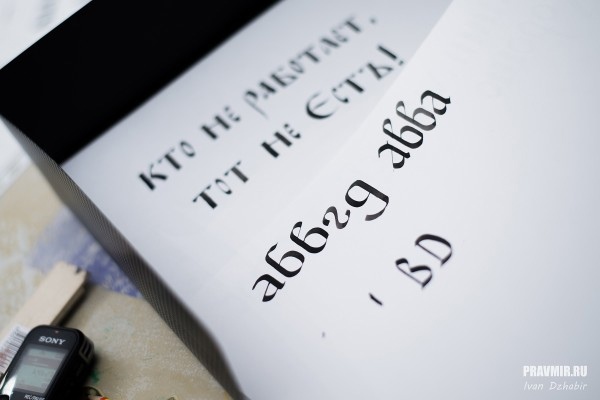
– Where did the calligraphy come from? As far as I know, it was the spread of Christianity that gave the development of the art of calligraphy, because it was necessary to copy the Bible in large quantities?
– Yes, and a book in general. Naturally, since writing even one book was very time -consuming – for a whole year, or even two or three could be spent, the most important books wrote. Not any local poet was copied, but scripture, the sayings of philosophers-all that culture was held on, and what was important to fix.
The books were very expensive and inaccessible to the main part of the population. Of course, on the one hand, the printed book killed calligraphy, but people became more educated. And in the monasteries the books were written for quite some time – until the 16th century.
— Now the calligraphy has almost disappeared?
– In places still lives. For example, recently I was invited to teach calligraphy at the institute for designers. Now, designers, unfortunately, are not engaged in fonts.
— Is it still possible to come up with your font now?
– Certainly.But often calligraphs come up with fonts that can only be written by one word – the name of the book, chapters. But you can’t dial the whole book with this font.
— Too confused?
– Yes, with all sorts of curls, interesting inventions. It’s good to see and admire such a font, but constantly read – eyes will get tired. So there are font fonts, but they do not engage in calligraphy at the same time.
— On Wikipedia, graffiti is also considered calligraphy.
– Why not? Graffiti, if it is made with a pen, a brush is calligraphy. It would be interesting for me to go outside with our students, take a wide brush and write something. If you write beautifully, it will decorate the city. After all, there are a lot of gray, ugly walls that can be decorated. Why don't calligraphs engage in decoration?
– And Chinese, Japanese calligraphy, all this “game with a brush and mascara” – This is a whole world. Modern Japanese calligraphy retains centuries -old traditions, creating and developing new directions on their basis. This is not close to us, is it another technique?
– Yes, this is a completely different culture, we do not understand them to the end, they are us. But when our Calligraph went to Japan, showed how we write letters, they said: Now we understand why we are so drawn to Russia. That is, the Japanese saw in our calligraphy something that complements their calligraphy.
And still the laws are the same. If we are talking about the design in the calligraphic handwritten font, the body of the letter should not be amorphous, but with flesh and bone. And the Japanese say the same. And I think we are distinguished by bad Japanese calligraphy from good as we can distinguish a good and bad picture, for example.
There was such a case: there was an exhibition of Shishkin, some woman came and wrote in the book of reviews: “Hello, Ivan Ivanovich, I looked at your work, I really liked it, I think that you are a genius. Here is my phone, I have a gallery, call. ” She did not even know that this was a great artist of the XIX century. But she appreciated, understand? That is, even if the second Shishkin appears now, he will be appreciated, he will stand out.
In the middle of the lesson, the abbot enters the class — Archpriest Pavel Velikanovand then joins the lesson: takes a feather, paper, first sign (“This is not my pen — Sharped differently, it is inconvenient to write, you need to sign … ”), and then he begins to write letters — clear, even.
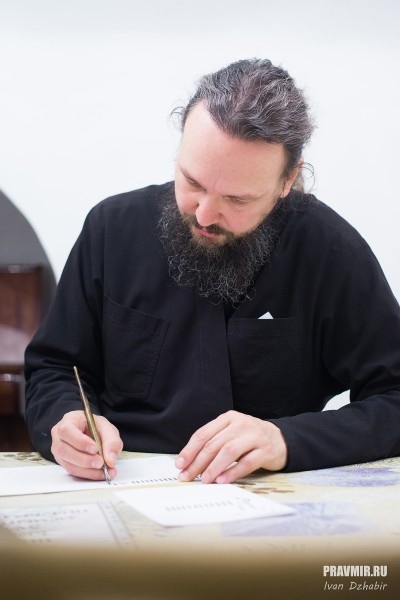
Archpriest Pavel Velikanov
— Father Paul, why should Orthodox calligraphy?
-Firstly, we want to generally increase interest in manual work, including in the activity that was traditional for Orthodox people-calligraphy. After all, a person most appreciates what he does with their own hands, and in the Church people from ancient times were engaged in rewriting books. To renew this tradition, I was encouraged by the testimony of those who, during the persecution of the Church by hand, copied books, prayers and other sacred books.
Secondly, calligraphy allows you to take a different look at the text, change your attitude to what is written in it. Once, at one of our seminar lectures, the teacher said: “Try to take and rewrite something from those holy fathers who are close to you, with whom you really feel an inner resonance – and you will feel that the perception of the text has changed.”
There is a reading into the text, into the material with which you work. Even if it is a very small piece of text or a word, a person already perceives it differently, feels that it is not just some monster who wrote something incomprehensible, but that it is native, familiar, understandable.
By the way, with the opening of calligraphy courses, I received a very powerful tool for terrorizing parishioners. Here, for example, Elena is sitting, she will throw out something wrong in her life, and I tell her: “You know what, my dear, write fifty times such and such a phrase that allows you to look at the situation in your life differently .
— Instead of penance?
– This is penance as a way to help a person gather his will into a fist and do what really needs to be done, but for which there is usually a catastrophic lack of time.
Thirdly, calligraphy does not tolerate fuss and requires a certain state of a person's inner world, peace. A person comes to class with his problems, worries, begins to write – and everything goes away. I remember one woman came from Moscow completely exhausted, in a state of some kind of terrible internal discord. She couldn't even draw a few straight lines. For herself, it was amazement: “How? I can't, why? I have good handwriting…
See how crooked it is? Because now I’m thinking not about what I’m writing, but about the fact that the service will begin now, and the main thing for me is not to be late. Calligraphy requires a certain mood. And what is most interesting is that this mood is created in the course of the lesson.
— And how much did you train to write so beautifully?
– Here you will laugh, and almost every day I write something at home. At least five or seven minutes, but I dedicate calligraphy. It's all Victor's fault.
By the way, we met in a very interesting way. When we were doing a project with Vladyka Mark (Archbishop of Ryazan and Mikhailovsky) “Religious Encyclopedia” on Radio Russia, then we decided to publish this project on the Bogoslov website. And I decided to make illustrations for the topics of the encyclopedia. I met Viktor, who turned out to be not only a good icon painter, but also a professional graphic artist. And when he started doing his work, I realized that a person who is engaged in calligraphy masterfully masters not only his hand, composition, but also has inner harmony. Then, for a whole year, I toyed with the idea of making calligraphy courses, and Viktor helped me out by becoming a teacher.
Another trip to China had an impact.Do you know what hooked me? I don’t know, this is a myth or truth, but somehow they told me that when a person is hired in China, they are first not at all at what kind of education he has, but at how he writes hieroglyphs. That is, it is believed that a person who does not know how to write correctly does not know how to think correctly.
Father Paul finishes to write and at the end with quick, talus movements leads one word: Good. I would say excellent.
“Isn't it pleasant to see what comes from under your hand?” Let everything be a little crooked and oblique, but still beautiful, and you understand that it is not hopeless. We have calligraphy – this is a tablet from a bad mood.


